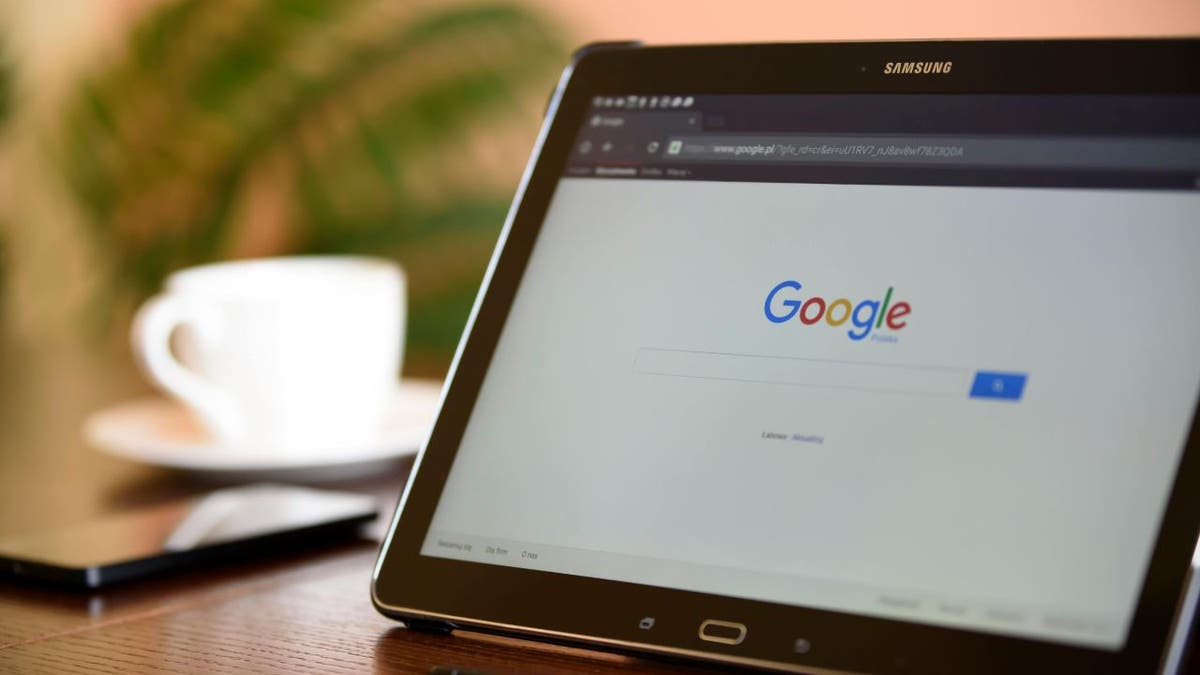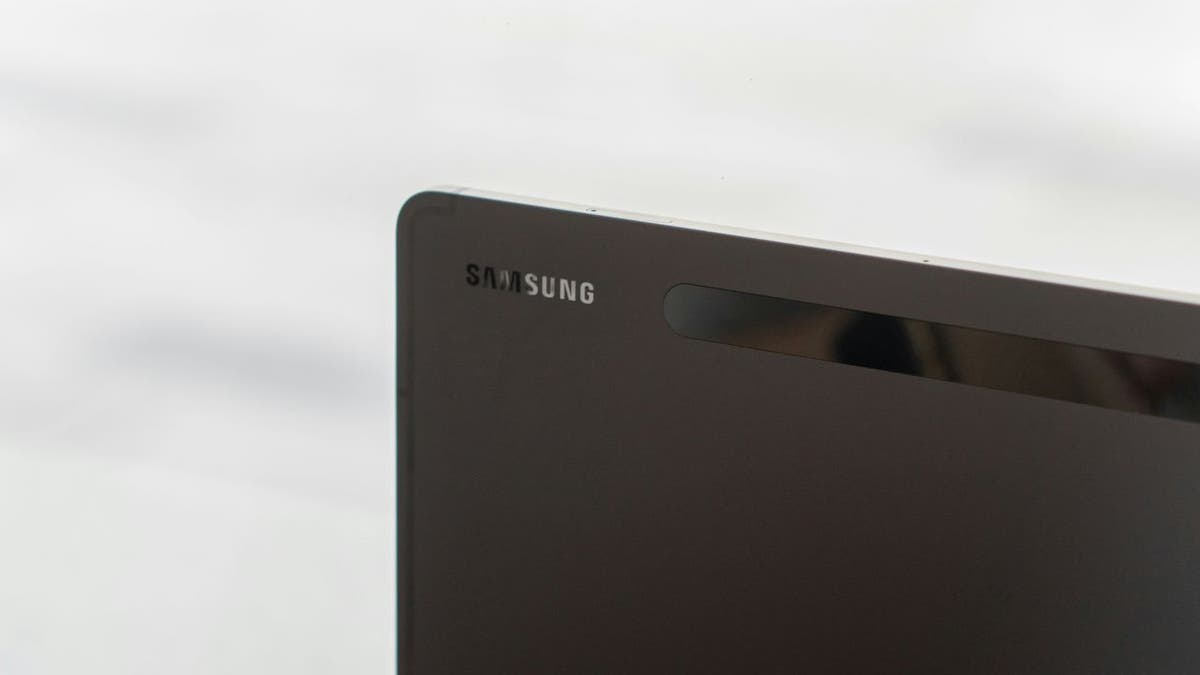NEWYou can now listen to Fox News articles!
Tablets aren’t just for streaming and strolling anymore. For many people, they serve as a digital wallet, photo album, document hub and even a mobile office. That’s especially true for Samsung Galaxy tablets, which offer powerful features and device sync capabilities that make them incredibly convenient and, unfortunately, a tempting target for criminals.
Unlike traditional computer hacks, compromising a tablet doesn’t always require elite technical skills. Sometimes, all it takes is a convincing phishing message, a shady app download or a moment of distraction in public. Once someone has access, your stored passwords, banking apps and private files could be up for grabs.
If your Galaxy tablet is acting strange or showing signs of compromise, don’t ignore it. Here’s how to spot the warning signs and what to do next.
Sign up for my FREE CyberGuy Report
Get my best tech tips, urgent security alerts and exclusive deals delivered straight to your inbox. Plus, you’ll get instant access to my Ultimate Scam Survival Guide — free when you join my CYBERGUY.COM/NEWSLETTER
5 PHONE SETTINGS TO CHANGE RIGHT NOW FOR A SAFER SMARTPHONE

Samsung Galaxy Tablet on a table (Kurt “CyberGuy” Knutsson)
Why Samsung Galaxy tablets get targeted by hackers
Samsung Galaxy tablets are capable of storing everything from passwords and payment methods to sensitive documents. They can even act as authentication devices for logging into other accounts. That makes them valuable, not just to you, but to hackers looking for a way in.
Unlike Apple devices, Galaxy tablets run on Android, which is known for its flexibility and open-source ecosystem. While this gives users more freedom, it also opens the door to greater risk. Third-party apps, less strict app store screening and inconsistent update habits across devices can leave Galaxy tablets exposed to malware and data theft. In short, the more essential your tablet becomes in your daily life, the more attractive it becomes to cybercriminals.
WHAT IS ARTIFICIAL INTELLIGENCE (AI)?
Common ways Galaxy tablets get compromised
Hackers don’t always need complex software or advanced skills to gain access to your tablet. In many cases, they rely on user behavior and weak security settings. Here are some of the most common entry points:
- Malicious app downloads: Downloading apps from third-party stores or even from the Google Play Store without checking reviews or permissions can introduce malware, spyware or adware onto your device.
- Phishing links and fake websites: Tapping a link in a sketchy email or message can direct you to a fake login page or trigger a silent download. Just one click can compromise your credentials or install spyware.
- Public Wi-Fi traps: Using unsecured public Wi-Fi can expose your data to anyone else on the network. In some cases, hackers even set up fake hot spots to intercept your information.
- Outdated software: Skipping system or app updates might feel harmless, but updates often patch critical security flaws. Delaying them gives hackers more time to exploit known vulnerabilities.
- Lost or unattended devices: Leaving your tablet unlocked in public or misplacing it without tracking enabled makes it easy for someone to gain access with no hacking required.

Samsung logo on a Galaxy tablet (Kurt “CyberGuy” Knutsson)
Signs your Samsung Galaxy tablet may be hacked
It’s not always obvious when something’s wrong. A hacked tablet won’t flash a red alert, but it will start acting in ways that just don’t feel normal. Small changes in performance or behavior can be early signs that something’s off. If you notice one or more of the following issues, it’s worth taking a closer look:
- Rapid battery drain or unexplained overheating: Malware running in the background can quietly eat up your system resources, causing your battery to deplete quickly or your device to feel hot, even when you’re not actively using it.
- Strange apps suddenly appear: If you notice unfamiliar apps you didn’t download, it could be a sign that someone else installed them either manually or through malware. Avoid opening them and investigate right away.
- Pop-ups, ads or odd redirects: An increase in aggressive pop-ups, full-screen ads or random redirects in your browser may indicate adware or other intrusive software hiding in your system.
- Your tablet crashes, freezes or restarts randomly: Frequent glitches or restarts can point to deeper issues with your operating system, especially if they started happening suddenly. Malicious apps or corrupted files could be behind the instability.
- Spikes in data usage: If your tablet starts consuming way more data than usual, even when idle, it might be sending information to a third party in the background.
- Suspicious activity on your accounts: If you notice password reset emails, login alerts from unknown locations,or new devices linked to your accounts, your tablet might be the weak link someone used to gain access.
- Unexpected calls, messages or charges: Receiving strange texts or calls, or seeing unfamiliar charges from apps or services, can be signs that someone has gained remote access and is abusing your device or its linked payment methods.

Man using Samsung Galaxy tablet (Kurt “CyberGuy” Knutsson)
How to secure your Samsung Galaxy tablet after a hack
If your tablet is acting strange, or you’ve spotted signs of compromise, don’t wait it out. Taking action quickly can help stop further damage and keep your personal data safe. Here’s what to do:
1. Use Safe Mode to spot suspicious apps on your Samsung Galaxy tablet
Safe Mode is a helpful troubleshooting tool that disables all third-party apps, allowing you to determine if an issue is caused by a downloaded app. If problems disappear in Safe Mode, a third-party app is likely to be the cause.
Enable Safe Mode while your tablet is turned off:
- Power off the tablet completely.
- Turn it on, and when the Samsung logo appears, press and hold the Volume Down button.
- If done correctly, “Safe mode” will appear in the bottom left corner. If not, repeat the steps.
Enable Safe Mode from the power menu (when the tablet is on):
- Press and hold the Power button and Volume Down button at the same time, or swipe down from the top right of the screen and tap the Power icon.
- Touch and hold the “Power off” icon until the “Safe mode” icon appears.
- Tap the “Safe mode” icon to restart in Safe Mode.
- To exit Safe Mode, restart your tablet normally or swipe down to access the Safe Mode notification and tap “Turn off.”
2. Uninstall apps you don’t recognize from your Samsung Galaxy tablet
Review your installed apps and remove anything unfamiliar or suspicious. Pay extra attention to apps without clear names or icons that resemble system tools but weren’t preloaded.
Steps to uninstall unknown apps from a Samsung Galaxy Tablet:
- Unlock your tablet and go to the Home screen.
- Swipe up from the bottom of the screen (or tap Apps) to open the App Drawer.
- Scroll through the list of apps and look for any app you don’t recognize.
- Tap and hold the suspicious or unfamiliar app icon.
- In the pop-up menu, tap Uninstall.
- A confirmation message will appear; tap OK to confirm.
If “uninstall” isn’t an option:
Some system or preinstalled apps can’t be fully removed but can be disabled:
- Go to Settings
- Tap Apps.
- Scroll through the list and tap the app you want to remove or disable.
- Tap Uninstall or, if that’s unavailable, tap Disable.
- Confirm when prompted.
3. Avoid clicking pop-ups or suspicious ads and use strong antivirus software
Pop-ups and in-app ads can trick you into tapping fake links or downloading harmful files. Even if they look trustworthy, avoid clicking on them on your Samsung Galaxy tablet. Frequent pop-ups may signal hidden adware or an app behaving badly. To protect your device, install strong antivirus software with real-time protection. A trusted security app can scan for malware, block unsafe websites and detect suspicious apps running in the background. It also helps remove hidden threats like spyware and keeps your tablet secure and running smoothly. Taking these steps boosts your privacy and gives you peace of mind while browsing or using apps.
Get my picks for the best 2025 antivirus protection winners for your Windows, Mac, Android and iOS devices at CyberGuy.com/LockUpYourTech
4. Check for strange texts, calls or settings changes
Look through your messages and call logs for anything you didn’t initiate. Also, check for unusual permission changes, especially for apps that access your location, contacts, camera or microphone.
5. Monitor battery and data usage
Check for unusual battery or data consumption, which can indicate malicious or misbehaving apps.
- Go to Settings > Device Care > Battery.
- Review which apps are consuming the most power and data.
- If rarely used apps are draining resources, they may be running in the background without your knowledge.
6. Enable built-in Samsung security tools
Use Samsung’s built-in tools for stronger protection. If your tablet runs One UI 6.0 (Android 14) or later:
- Turn on Auto Blocker: Go to Settings > Security and privacy > Auto Blocker.
- Enable Secure Folder: Create a secure, encrypted space for sensitive apps and files.
- Set up biometric authentication: Use fingerprint or facial recognition to lock down your device.
GET FOX BUSINESS ON THE GO BY CLICKING HERE
7. Change your passwords immediately
Start with your Samsung account, email and bank logins, especially if you used them on your tablet. Consider using a password manager to generate and store strong passwords.
Check out the best expert-reviewed password managers of 2025 at Cyberguy.com/Passwords
8. Consider using a VPN going forward
A VPN encrypts your connection and protects your data when you’re on public Wi-Fi. A reliable VPN is essential for protecting your online privacy and ensuring a secure, high-speed connection.
For the best VPN software, see my expert review of the best VPNs for browsing the web privately on your Windows, Mac, Android and iOS devices at Cyberguy.com/VPN
9. Update your operating system and apps
Hackers often exploit outdated software. Go to Settings > Software update > Download and install to check for the latest updates. Also, open the Galaxy Store and Google Play Store, tap your profile, and update all apps. Updates often include security patches that close known vulnerabilities.
10. Check Google and Samsung account activity
See if any unknown devices or sessions are logged into your account:
- Google Account: Visit myaccount.google.com/security
- Samsung Account: Go to Settings > Security and privacy > Samsung Account > Devices
- Remove any devices you don’t recognize and change your account passwords.
11. Turn off app installation from unknown sources
Make sure only trusted sources can install apps:
- Go to Settings > Security and privacy > Install unknown apps
- Disable permission for anything other than the Galaxy Store or Play Store
12. Scan device with Google’s built-in Play Protect
Even with a strong third-party antivirus, it’s smart to run Google’s native security check:
- Open the Google Play Store
- Tap your profile icon > Play Protect > Scan
13. Alert your contacts if needed
If you suspect your device was used to send scam messages, let your contacts know. This can prevent further phishing attacks from spreading from your hacked account.
14. Check accessibility and device admin permissions
Malware sometimes hides in accessibility settings:
- Go to Settings > Accessibility > Installed apps
- Disable anything suspiciousAlso, go to Settings > Security and privacy > Device admin apps and revoke access to anything you don’t trust.
15. Factory reset as a last resort
If the problems persist, and you can’t identify the source, back up your data and perform a factory reset.
Back up your data
Before resetting, make sure your important files are saved. A factory reset will erase everything.
- Go to Settings.
- Tap Accounts and backup.
- Under Samsung Cloud or Google Drive, choose Backup data.
- Follow the prompts to back up your photos, apps, messages, and other content.
You can also connect to a computer and copy files manually if you prefer.
Perform a factory reset
- Open Settings.
- Scroll down and tap General Management.
- Tap Reset.
- Select Factory data reset.
- Review what will be erased, then tap Reset at the bottom.
- Enter your PIN, password, or pattern if prompted.
- Tap Delete all to confirm.
Your tablet will restart and begin the reset process. This may take several minutes. After the reset, you’ll need to sign in with your Google account to complete the setup. This is part of Factory Reset Protection (FRP) to prevent unauthorized access.
16. Use a personal data removal service
Hackers often scrape personal details from public data broker sites. Even if you secure your tablet, your name, email, phone number and home address may still be circulating online, making you a target for future scams, identity theft or phishing attempts. A personal data removal service scans these broker sites and submits removal requests on your behalf. It’s a helpful way to reduce your digital footprint and stop criminals from exploiting your exposed information.
Check out my top picks for data removal services and get a free scan to find out if your personal information is already out on the web by visiting Cyberguy.com/Delete
Get a free scan to find out if your personal information is already out on the web: Cyberguy.com/FreeScan
CLICK HERE TO GET THE FOX NEWS APP
Kurt’s key takeaways
If your Samsung Galaxy tablet is running hot, glitching or showing apps you don’t recognize, it might not be a fluke. These are often early signs of malware or a security breach. Hackers don’t always need advanced tools to get in. A single bad link or outdated setting can expose your personal data. Take action right away by removing suspicious apps, checking your settings and running a trusted antivirus scan.
Using Safe Mode can help pinpoint the problem, and Samsung’s built-in security tools offer extra protection moving forward. For even more security, consider adding a VPN and password manager to your daily routine. If nothing else works, back up your data and perform a factory reset to start fresh and protect your information.
Have you ever had your tablet hacked or noticed something suspicious on your device? Let us know by writing to us at Cyberguy.com/Contact
Sign up for my FREE CyberGuy Report
Get my best tech tips, urgent security alerts and exclusive deals delivered straight to your inbox. Plus, you’ll get instant access to my Ultimate Scam Survival Guide — free when you join my CYBERGUY.COM/NEWSLETTER
Copyright 2025 CyberGuy.com. All rights reserved.
